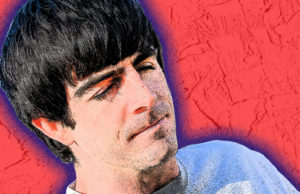
Anyone who’s been to the movies lately knows that “RELEASE THE KRAKEN!” is probably the catchphrase of the season.
As uttered in the trailer for “Clash of the Titans” by a bearded, berobed, Olympic-size
it doesn’t have the romantic tingle of “You had me at hello.” Or the
saltiness of “I’ll have what she’s having.” But as movie mantras go, it
captures the exclamatory quality of “Clash of the Titans.” And of a
movie year that has redefined the big-screen spectacle.
Few movies would seem more amenable to a remake in
the age of computerized special effects than that camp classic “Clash
of the Titans,” which, under the direction of Louis Leterrier (“The
Incredible Hulk”), has become a story of men vs. gods — namely, the
half-man/half-deity Perseus (
emblematic accessories of the 1981 original — Pegasus the winged horse,
Medusa the snake-haired demon, the unruly Kraken — are all back and
enhanced.
Leterrier, in fact, started creating his own special effects as an 8-year-old, after he saw the first “Clash” in
The new “Clash” was not intended as a 3-D movie — it
was the success of “Avatar,” Leterrier said, and that other 3-D
conversion, “Alice in Wonderland,” that prompted
“When the company doing the conversion saw my film,”
he said, “they said, ‘This is just what we want — stuff coming at you,
stuff going away, big swooping camera moves.’ … We had this enormous
cable camera that goes down and back up and follows Pegasus up and
down. My directing style was lending itself to 3-D, so it was a perfect
movie to do that.”
Good thing, because when it comes to would-be
theatrical blockbusters, the 3-D juggernaut is on the luge track to
Crazytown. So is
“I think he was living in his car.”) Also in the film beside
Worthington, the Irish Neeson and the English Fiennes: the French Alexa
Davalos (Andromeda) and the Danish Mads Mikkelsen as Perseus’ buddy,
Draco.
“You might as well give them different accents,”
Mikkelsen said, referring to the audiences that will likely flock to
“Clash” this Friday. “The funny thing about America is that 80 percent
of the people here have an accent. It’s a good development.”
Good development for him, too, or at least a payday.
The hunky Danish star is well known to foreign filmgoers here: In
addition to such big-budget fare as “Casino Royale,” he’s worked for
his compatriot directors
Wedding”), “An Education’s” Lone Scherfig (“Wilbur Wants to Kill
Himself”) and Danish provocateur Nicolas Winding Refn (“Bleeder,”
“Pusher” and the upcoming “Valhalla Rising”). It seems safe to say
Mikkelsen’s trying to maintain some kind of
“It is safe to say,” Mikkelsen said, “if you do the
same thing every day, you get slightly disappointed; when you mix it up
every once in a while, it’s fantastic. If I only did small drama, I’d
grow tired of myself; if I only did epic films, I’d grow tired of
myself. Getting the chance to mix the two is a great opportunity.”
And as far as Leterrier is concerned, putting new
faces on-screen can only be good. “I like discovering people
on-screen,” said the director, who used the well-known
It becomes their film. I wanted something more of an ensemble cast, not
‘Clash of the Egos,’ but something with great actors working together.”
The only thing that seems to give Leterrier pause
about his “Clash of the Titans” remake is, well, the fact that it’s a
remake. “As a real movie fan, I want to see originality,” he said. “Or
as original as you can get. Some movies that have been done before,
there are ways of reimagining them. But I hope it doesn’t become the
norm, that remakes are the only way to make a movie anymore.
“It’s hard for me to judge,” he said, “but I think
this ‘Clash’ is quite different from the original. And I’m working on a
lot of other things now, and none of them are remakes.”
———
THE ORIGINAL GRECIAN FORMULA
The 1981 version of “Clash of the Titans” starred such lordly English actors as
His Perseus was put through the mythological wringer by Olivier’s Zeus:
killing the snake-haired Medusa, capturing the winged horse Pegasus and
battling the Kraken, all en route to winning the lovely Andromeda (
Directed by
was buoyed by the trademark special effects of its producer, Ray
Harryhausen, whose stop-motion animation was the calling card of such
special-effects landmarks as “The 7th Voyage of Sindbad” (1958), “Jason
and the Argonauts” (1963) and “One Million Years B.C.” (1966).
———
THESE FILMS WERE HIT AND MYTH
What most of us don’t remember from high school about the birthplace of Western civilization — aka ancient
often to hilarious effect. For the most part, the big screen’s
interpretation of the land of Sophocles, Socrates and Alexander the
Great has mostly been about gods, myths, sea battles and English
accents. Following are a few standouts of a weird tradition:
HERCULES UNCHAINED (1959) — A milestone in the
sword-and-sandal craze of the late ’50s, early ’60s, this Italian
production starred
“Hercules”). The story was basically an amalgam of various myths and
Greek drama.
JASON AND THE ARGONAUTS (1963) — Ray Harryhausen’s
magic brought the inanimate to life, let monsters walk the Earth and
gave flight to Harpies in this
which followed Jason and his posse as they pursued the Golden Fleece.
En route, they’re attacked by an enormous bronze statue, are helped by
a giant merman and battle a sword-wielding skeleton army — all of which
predated computer graphics and were brought to life via Harryhausen’s
stop-motion animation.
THE ODYSSEY (1997) — Emmy-winning adaptation of the
epic poem, directed by respected Russian director Andrei Konchalovsky
(“Runaway Train”) and starring
TROY (2004) — Based on “The Iliad” but given a naturalistic spin by director
300 (2006) —
King Leonidas who, in 480 BC, battled 100,000 Persians in the Battle of
Thermopylae. It was ancient
———
(c) 2010, Newsday.
Visit Newsday online at http://www.newsday.com/
Distributed by McClatchy-Tribune Information Services.














